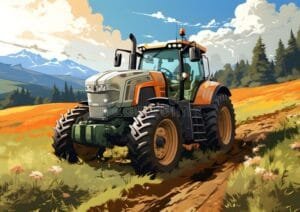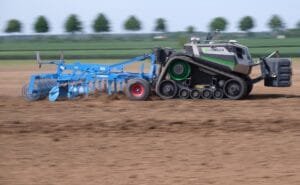The Australian agricultural machinery sector, particularly the tractor market, continues to evolve amid changing farming practices and technological advancements. This complete report examines current trends, market dynamics, and growth projections in Australia’s tractor industry from 2023 onwards. As farming operations expand and modernize across the continent, the demand for both compact and high-powered tractors demonstrates meaningful shifts in response to factors such as precision farming adoption, labor shortages, and environmental considerations. Through detailed analysis of sales data, consumer preferences, and market indicators, this study provides valuable insights into the direction of Australia’s tractor market and its economic implications for the agricultural sector. The agricultural machinery sector in Australia has witnessed considerable growth, with the tractor market emerging as a significant contributor to the industry’s expansion. Recent market analysis indicates a compound annual growth rate of 4.8% between 2020 and 2025, driven by technological advancements and increasing farm mechanization.
Australian farmers are increasingly adopting precision agriculture technologies, leading to higher demand for advanced tractors equipped with GPS guidance systems, automated steering, and smart farming capabilities. This shift towards smart farming solutions has particularly benefited manufacturers offering tractors with integrated digital platforms and IoT connectivity.
Medium-range tractors (40-100 HP) continue to dominate the market share, accounting for approximately 45% of total sales. These tractors offer versatility for various farming operations while maintaining cost-effectiveness for small to medium-sized farms.High-power tractors (above 100 HP) have shown steady growth, particularly in broad-acre farming regions.
Regional analysis reveals that New South Wales and Victoria lead in tractor purchases, collectively representing 55% of national sales. Western Australia follows with significant demand from its extensive grain-growing sector. Queensland’s diverse agricultural landscape has created steady demand across various power segments.Import statistics show Japan and India as major source countries for tractors, with European manufacturers maintaining a strong presence in the premium segment. Domestic assembly operations have increased,with several international manufacturers establishing local facilities to reduce logistics costs and improve after-sales service.
Environmental considerations are reshaping market dynamics, with growing interest in electric and hybrid tractors.Though currently representing a small market segment, eco-friendly alternatives are expected to gain traction as technology improves and government incentives for enduring farming practices increase.
The second-hand tractor market remains robust, influenced by economic uncertainties and the high capital cost of new equipment. This trend has prompted manufacturers to offer competitive financing options and comprehensive warranty packages to attract buyers towards new machines.
Rental and leasing services have expanded, particularly in regions with seasonal farming activities. This business model has enabled farmers to access modern equipment without substantial capital investment, contributing to market growth.
Supply chain disruptions during recent years have led to increased inventory management challenges, pushing prices upward by an average of 15%. Manufacturers have responded by diversifying their supplier base and establishing regional parts distribution centers.
Industry forecasts suggest continued growth in the Australian tractor market, driven by agricultural expansion, technology adoption, and government initiatives supporting farm mechanization. The trend towards larger, more sophisticated machines is expected to continue, while the entry-level segment maintains steady demand from smaller operations and hobby farmers.










